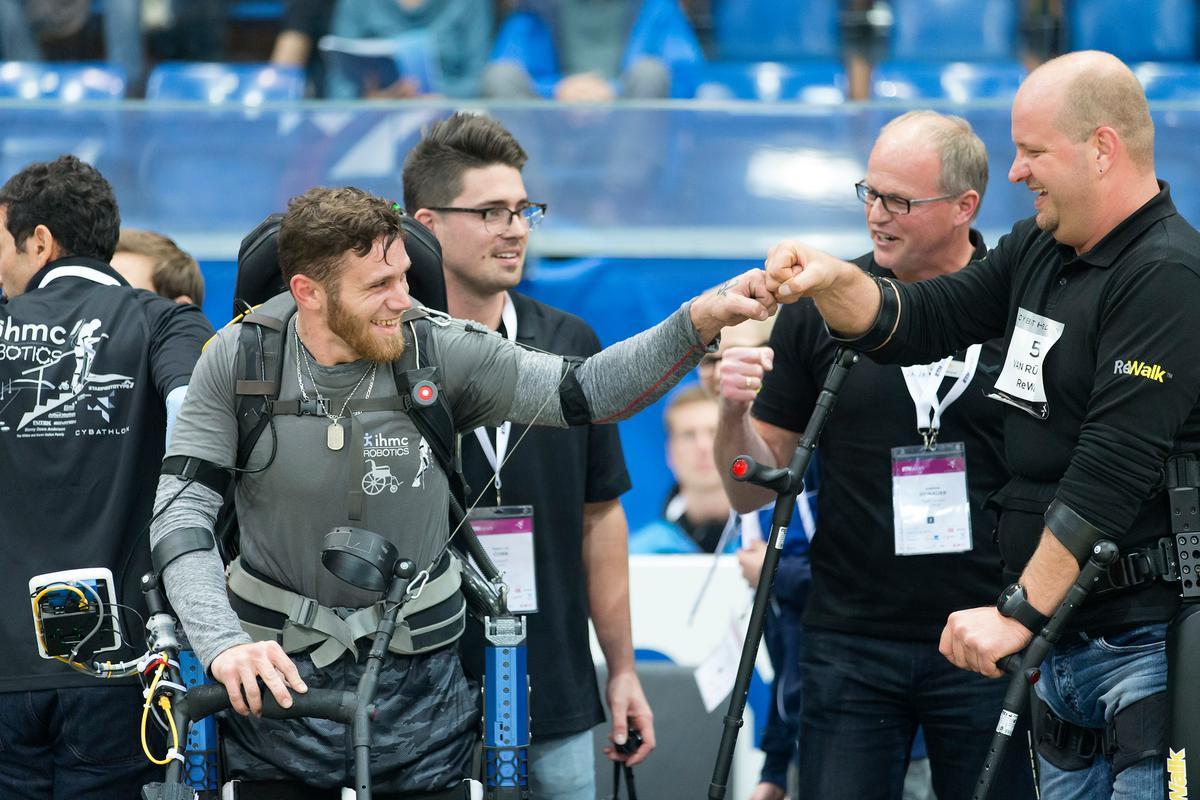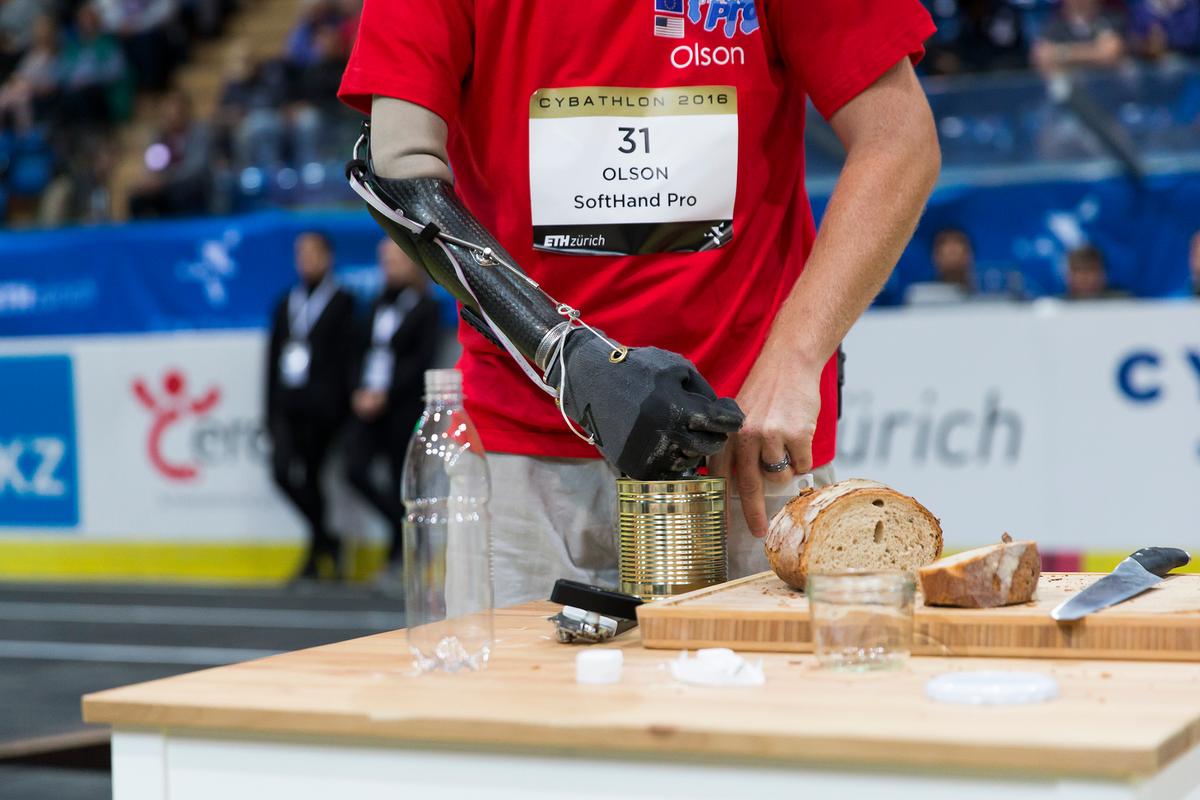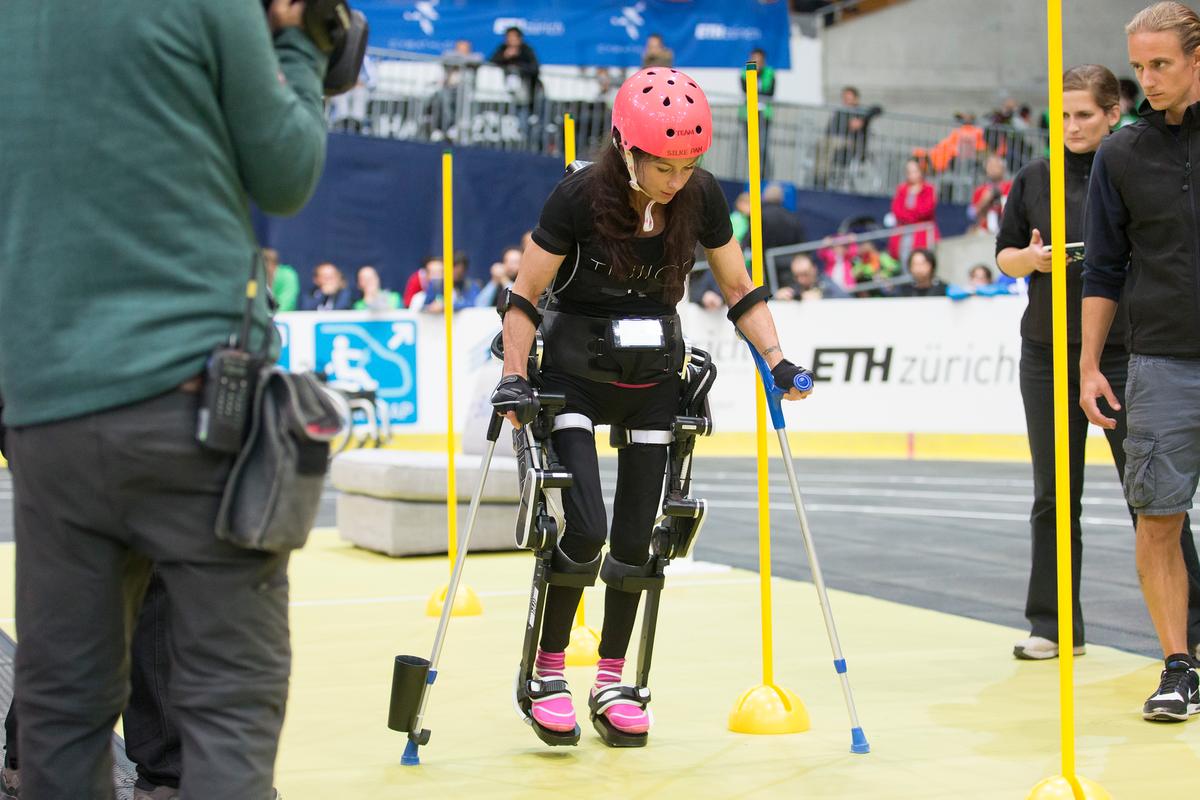One morning about seven years ago, Robert Riener, a biomedical engineer in Switzerland was drinking coffee and reading the news when he came across a story about Zac Vawter. Vawter, an amputee who lost the lower half of his right leg in a motorcycle accident, had just climbed the 103-story Willis Tower in Chicago while wearing an experimental prosthetic leg, partially controlled by his mind. The prototype limb gave Vawter the independence to meet the challenge on his own, and also the range of motion that allowed him to achieve everyday accomplishments, such as climbing stairs, that most people take for granted.
How One Man’s Superhuman Feat Inspired the World
by Marianne Lucien, 9 January 2020
Inspired by a partially-robotic climb of a Chicago skyscraper, ETH Zurich launched the CYBATHLON, an Olympic-style competition combining man and machine. CYBATHLON 2020 is poised to demonstrate the accelerated development of assistive devices from prosthetic limbs to exoskeletons; and from stair-climbing wheelchairs to brain-computer interfaces.

Image: ETH Zurich / Nicola Pitaro
Inspiring creativity
Riener and his 30-person lab at ETH Zurich work on similar advanced technologies including prostheses, exoskeletons, neuro-stimulation, and powered wheelchairs. Energized by Vawter’s heroic feat, Riener assembled his research team to conceptualize a competitive event that could raise public awareness for people with disabilities and to demonstrate how engineering and research address some of the needs of this segment of society. While the ideas flowed, when Riener spoke with a disabled acquaintance about the challenges he faced using a commercial prosthetic hook and cable-driven arm, he realized there was a deeper and more meaningful mission ahead. While commercial prosthetics functioned well for large movements, it was incapable of handling everyday tasks that require two-handed coordination and fine motor skills such as carrying a bag of groceries and reaching into a pocket for a wallet or keys.
Surmounting everyday tasks
Riener realized that he needed to demonstrate the limitations that people with disabilities face in coping with everyday life and to promote their inclusion in society. So he founded the CYBATHLON – an Olympic-style competitive event that launched alongside the 2016 Olympics. Unlike the Paralympic games that consists of well-trained athletes and prohibits assistive technologies, the CYBATHLON pitted teams of researchers and engineers working directly with “pilots” or users of assistive devices.

Image: ETH Zurich / Nicola Pitaro
Accelerating technology
The CYBATHLON not only increased awareness of people with disabilities and their needs, but it also accelerated the development of useful assistive technologies and promoted a meaningful dialogue between scientists, engineers, people with disabilities, and society. In 2015, Riener organized a rehearsal inviting research teams from around the world to a stadium in Zurich. Pilots put the new technologies and prototypes to the test in well-designed, timed races in which they performed everyday tasks like cutting bread, climbing stairs, or opening doors. At the rehearsal, only one team had developed a stair-climbing wheelchair. One year later, at the official launch of the 2016 CYBATHLON, 12 powered wheelchair teams participated, 11 of which included stair-climbing technologies.
Motivating people around the world
The first of its kind, the 2016 CYBATHLON attracted 4,600 spectators to a sold-out stadium in Zurich, Switzerland. Sixty-six pilots – disabled persons who competed using novel assistive devices such as brain computer interfaces, bikes driven by artificially stimulated muscles, powered arm and leg prostheses, exoskeletons, and powered wheelchairs – supported by 56 teams from 25 countries participated in the races. More than 150 journalists covered the event resulting in 8 hours of live television coverage in Switzerland, Germany and Austria, a full-length episode on the technology show, BBC Click, interviews with CNN, the New York Times, the Yomiuri Shimbun, Wall Street Journal, and a special series online with Engadget, just to name a few. The West African country of Sierra Leone even issued a series of postage stamps featuring images from the CYBATHLON. The BBC named one of the event’s images as “the most striking picture of the year” and the CYBATHLON even got a mention in the 2018 Guinness Book of World Records. Last, but not least, the CYBATHLON team garnered top awards including a European Excellence Award, Yahoo Sports Technology Award, and the Global Education Award.
Advancing science and society
The journals Nature and Science published scientific articles on the CYBATHLON and three other journals responded with special issues featuring the development of technologies from different teams participating. More important than media attention and awards, the CYBATHLON connects people with disabilities to society building a broader awareness of the need for greater inclusion. CYBATHLON returns in May 2020 as a two-day event with 96 teams representing 30 nations along with a scientific symposium focused on user-centered design of assistive technologies.

Image: ETH Zurich / Nicola Pitaro
Raising the bar
CYBATHLON 2020 will feature new challenges in its six disciplines from an Arm-Prosthesis race with a haptic box in which pilots have to feel objects without seeing them to promote sensory feedback, to an Exoskeleton race in which pilots will have to manipulate cups while balancing. It will feature a new computer game in which pilots with quadriplegia will use brain signals to control virtual vehicles. Wheelchair users will have to open a door with a robotic arm and Prosthetic-Leg racers will balance objects to demonstrate walking without visual control of leg movement. Finally, organizers have expanded the Functional Electrical Stimulation Bike race to about 1150 meters (over 3,700 feet). If CYBATHLON 2020 is anything like its premiere, Riener expects an inspirational and emotional experience with tears and cheers – be sure to bring tissues.


